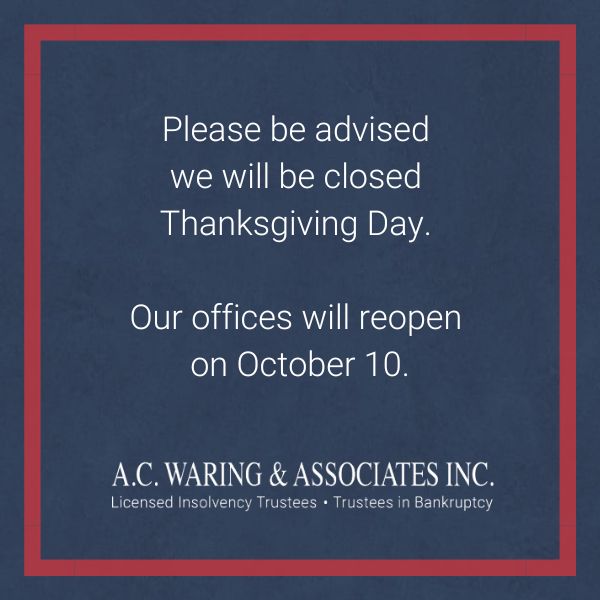As a business owner, you invest more than just money into your venture—you invest your time, passion, and future. When financial challenges arise, the stress can feel immense, and the terminology can be confusing.
Understanding your situation is the first step toward finding a solution, and it is vital to have a plan for avoiding debt overload when starting a business.
Insolvency refers to the financial state of being unable to pay one’s debts as they become due, whereas bankruptcy is a specific legal process designed to resolve this state.
Knowing this distinction is crucial because being insolvent does not always mean you must declare bankruptcy; you have other comprehensive debt solutions to explore.
Recognizing Financial Distress in Your Business
As a business owner, you must spot financial trouble early. Unforeseen circumstances—a lost contract, a market downturn, or unexpected expenses—can strain even the best business plan. Addressing these signs early can open the door to more solutions and prevent more serious consequences.
Cash Flow Struggles
You consistently find it hard to pay your suppliers, employees, or regular bills on time. Your business expenses are greater than your revenue for an extended period. This negative cash flow is a primary indicator of financial distress.
Reliance on Credit for Daily Operations
Your business uses credit cards or lines of credit to cover essential operating expenses like payroll or rent. You may find yourself taking on new loans just to make payments on existing debt. This cycle can quickly become unsustainable.
Increasing Creditor Pressure
Suppliers who once offered you credit terms now insist on cash-on-delivery. You may also begin to receive legal notices or frequent calls from collection agencies about overdue accounts. These actions signal that your creditors are losing confidence, and you may need guidance on how to handle debt collection agencies.
Understanding the Key Terms: Insolvency vs Bankruptcy
While people often use these terms interchangeably, they represent 2 different concepts. Grasping this difference is the first step toward finding the right solution for your financial situation. It empowers you to make informed decisions for your business and your future.
Insolvency: The Financial State
Insolvency is a state where you are unable to pay your debts as they become due. This can also happen if the total value of your debts is greater than the value of your assets. Being insolvent is a financial reality, but it does not automatically mean you must file for bankruptcy.
Bankruptcy: The Legal Process
Bankruptcy is a formal legal process governed by the federal Bankruptcy and Insolvency Act. It is a tool for an insolvent person or business to get relief from most debts and achieve a fresh start. You can learn more about the pros and cons of filing for bankruptcy to determine if it is the right step. This process must be administered by a government-licensed professional.

Exploring Your Options Before Bankruptcy
If your business is insolvent, bankruptcy is not your only path forward. A Licensed Insolvency Trustee (LIT) will help you explore alternatives that may be a better fit for your specific circumstances. These options can provide relief while allowing you to maintain more control.
Consumer Proposals
A consumer proposal is a formal, legally binding offer made to your creditors. You agree to pay a percentage of what you owe or extend the time you have to pay it back. It allows you to keep your assets and immediately stops collection calls and wage garnishments. Understanding the differences between bankruptcy and a consumer proposal is key to choosing the right path.
Debt Management Plans
This is an informal arrangement often made through a credit counselling agency. You make a single consolidated monthly payment to the agency, which then distributes it to your creditors. While these plans can help, it is important to understand when credit counselling is needed and how it differs from legally binding solutions, as creditors are not legally required to participate.
When Bankruptcy Is the Path Forward
In some situations, bankruptcy is the most practical and effective way to get a fresh start. Understanding what to expect can reduce your stress and help you prepare for the process. It is a structured path toward financial stability.
How the Bankruptcy Process Works
- You meet with a professional trustee to review your finances and discuss your financial options such as repayment, consumer proposal or bankruptcy.
- If bankruptcy is the best option then the trustee will file the official documents to start the legal process.
- You attend 2 mandatory financial counselling sessions to help you build a stronger financial future.
- You are discharged from your debts, typically within 9–21 months for a first bankruptcy. An explanation of how Federal bankruptcy laws work can clarify these timelines.
What Happens to Your Assets
You do not lose everything when you file for bankruptcy. Each province has laws that protect certain assets, like basic household goods and tools needed for your work. A Licensed Insolvency Trustee will explain exactly which of your assets are protected during bankruptcy.
The Impact on Your Credit
A first-time bankruptcy remains on your credit report for 6 years after your discharge. A consumer proposal has a less impact on your credit score than bankruptcy. Both options provide an opportunity to begin rebuilding your credit.
Why Working with a Licensed Insolvency Trustee Matters
Navigating debt is complicated, and getting the right advice is essential. The federal government legally empowers licensed Insolvency Trustees in Edmonton to administer bankruptcies and consumer proposals. Understanding what a Licensed Insolvency Trustee is and their qualifications is your first step toward a solution.
Your Guide Through the Legal System
An LIT has a duty to act honestly and fairly for you and your creditors. They will review your entire financial picture and explain every available option in clear, easy-to-understand language. Their goal is to help you find the best possible outcome.
Providing Comprehensive Debt Solutions
An LIT can provide a full range of services, from informal advice to administering formal proposals and bankruptcies. They also provide the mandatory credit counselling required by law. This ensures you have the tools to succeed financially after the process is complete.
Find Your Path Forward
Financial hardship can feel isolating, but you do not have to face it alone. Acting early, understanding your options, and seeking professional advice are the keys to regaining control. By addressing insolvency head-on, you can prevent bigger problems and find the right solution to move forward.
The team at A.C. Waring & Associates understands the pressure you are under because we are real people who help real people. We provide clear, confidential, and compassionate guidance to help you navigate your options.
Contact us today to schedule a free, no-obligation consultation and take the first step toward your fresh start.





